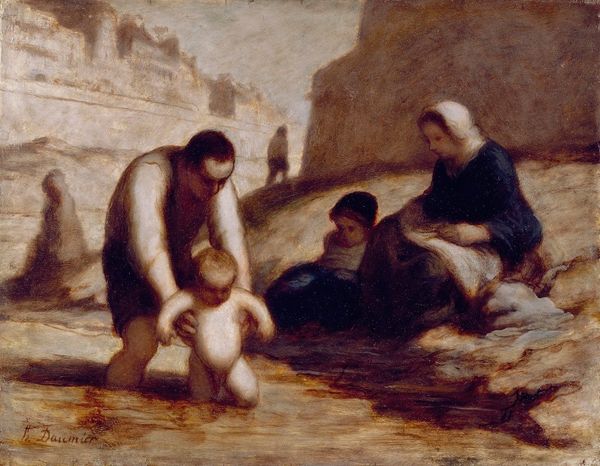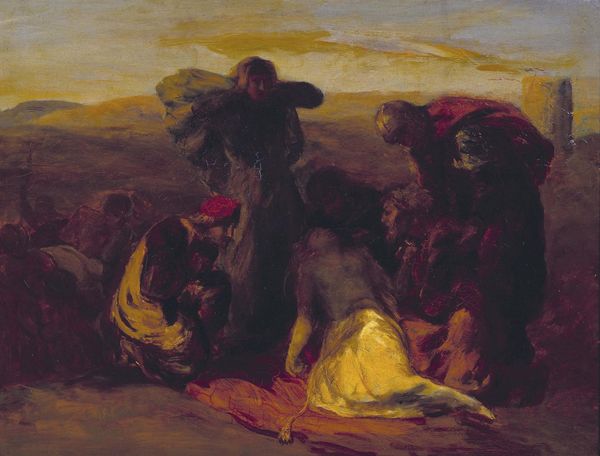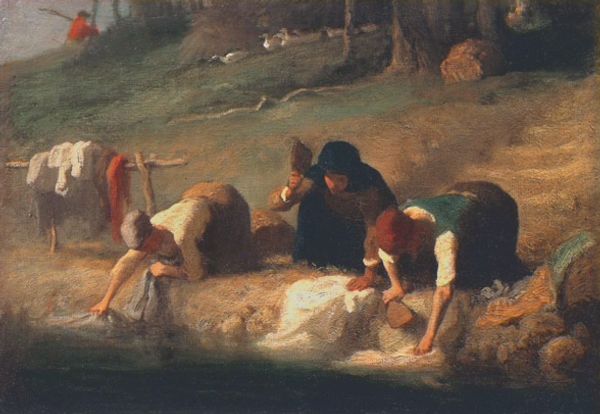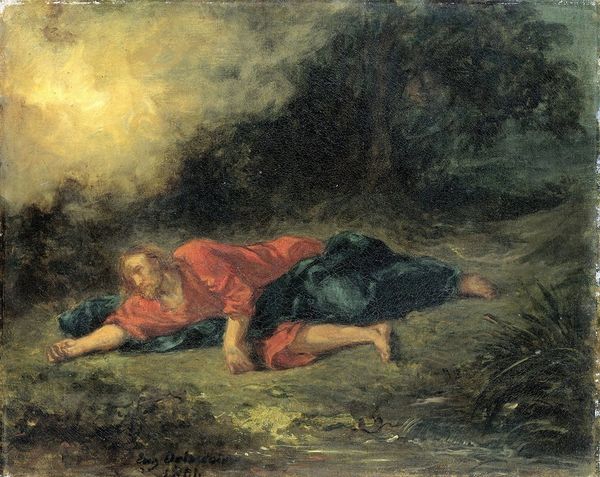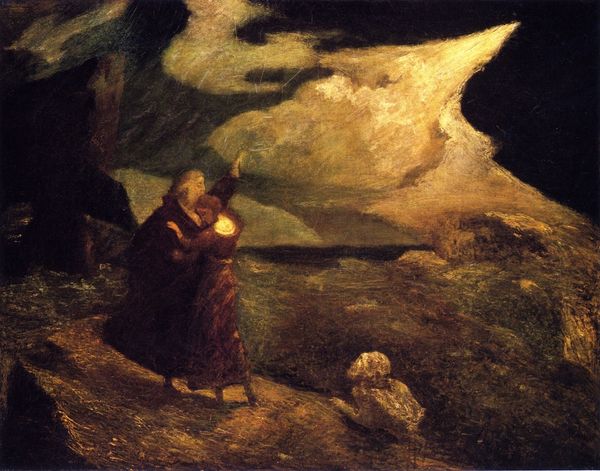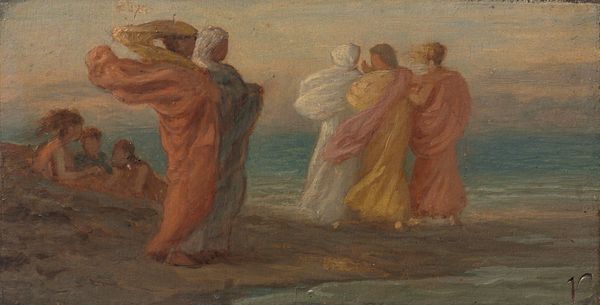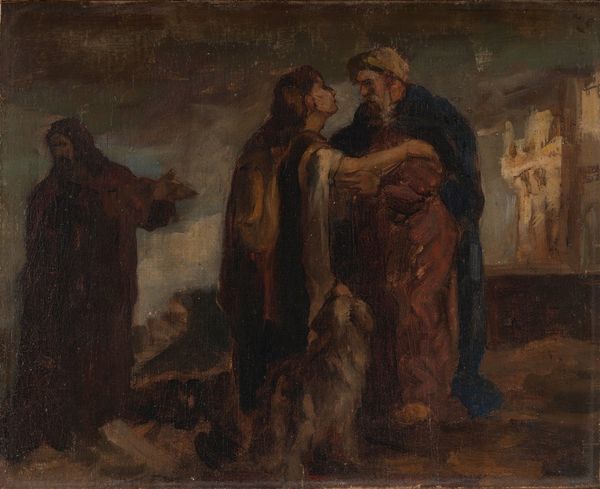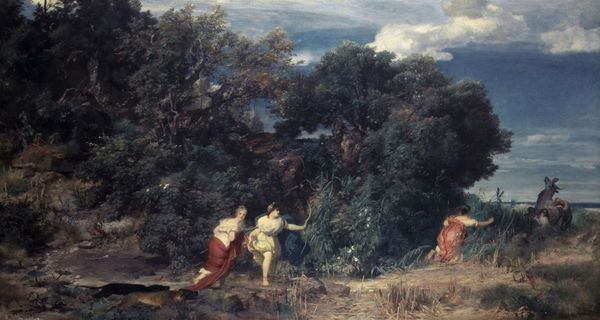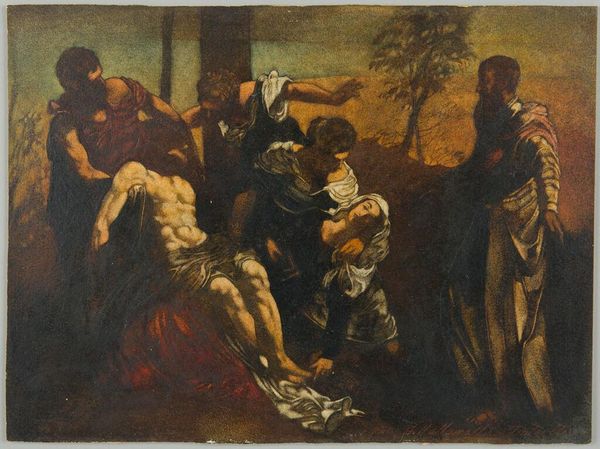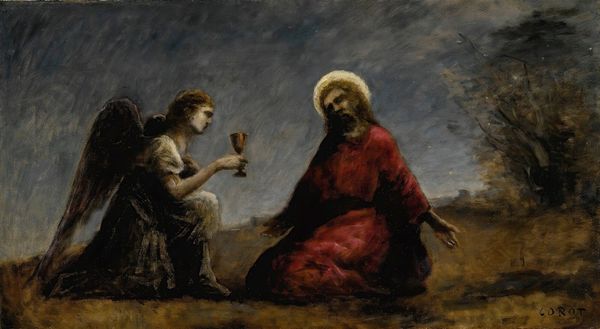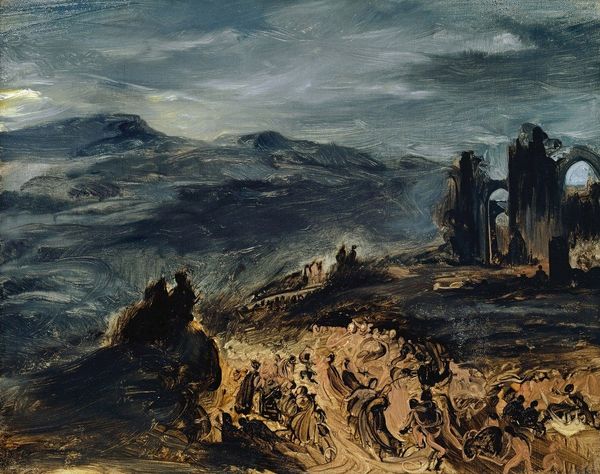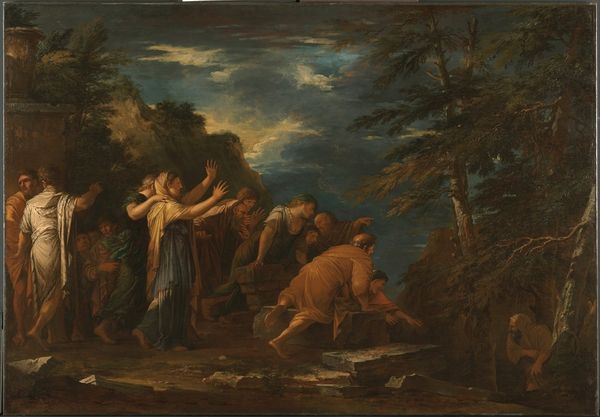
painting, oil-paint
#
allegory
#
narrative-art
#
fantasy art
#
painting
#
oil-paint
#
landscape
#
charcoal drawing
#
figuration
#
romanticism
#
history-painting
#
academic-art
#
nude
Copyright: Public Domain: Artvee
Curator: "The Burning of Sodom," crafted with oil paints between 1843 and 1857, comes to us from Camille Corot. Editor: What strikes me first is the oppressive atmosphere. A sense of urgency and dread permeates the canvas, it's as if the very air is thick with foreboding. Curator: The artwork's narrative derives from the biblical account. Observe how Corot utilizes the paint to render the emotional turmoil and moral decay associated with Sodom's destruction. Notice also how the ground is almost brown, muddy: these were difficult places to live, hard lands that took skill and technique to farm or settle. Editor: Indeed. And these figures fleeing – they’re not just running from fire, but from something within themselves. The figure carrying what seems to be a mask, or even a head – it's an arresting symbol, maybe representing the burdens they carry from their past lives? Consider also the way in which this moment encapsulates our enduring anxieties about societal collapse, anxieties amplified by divine retribution. Curator: It's worth examining Corot's brushwork here. Notice how he contrasts smoother strokes in the figures' skin against the looser, more gestural marks used to depict the burning city and turbulent sky. These variations aren’t accidental. They denote the raw materials that went into the work itself – and, perhaps also, how the Romantic tradition employed landscape to stand in for social forces. Editor: The landscape does seem to serve as a character in itself, echoing and amplifying the emotional drama. Those figures feel lost and overwhelmed amidst something much larger than themselves, which may point us toward an older and universal recognition of nature’s power over us. I cannot help but notice this constant artistic attention toward skies and nature, almost regardless of time or place. Curator: Looking at Corot's treatment, however, I am struck by how those turbulent skies are not mere background; their raw and unstable treatment show the way Corot utilized then cutting edge, ready-made colors made accessible in the industrializing mid-19th century. Editor: So, in essence, we're both led back to a fascinating crossroads: one where artistry, faith, cultural memory, and, as you remind us, shifts in production intertwine. Curator: Exactly. It is difficult, viewing art, not to wonder how it manages to connect across history.
Comments
No comments
Be the first to comment and join the conversation on the ultimate creative platform.
